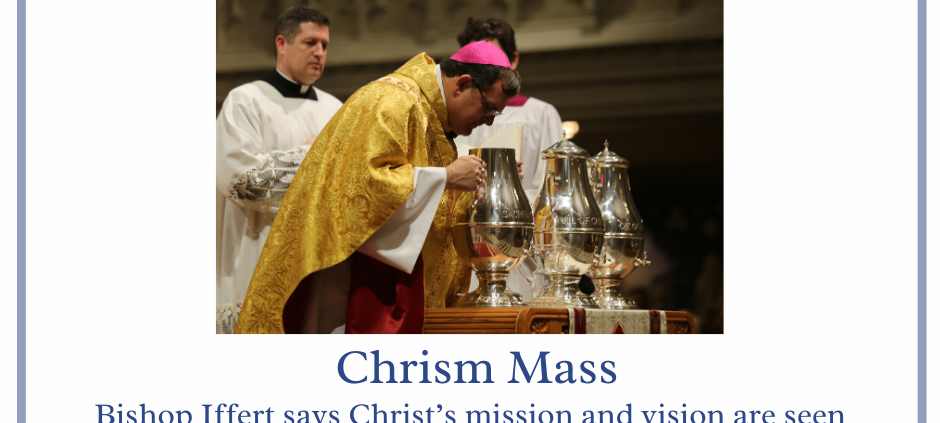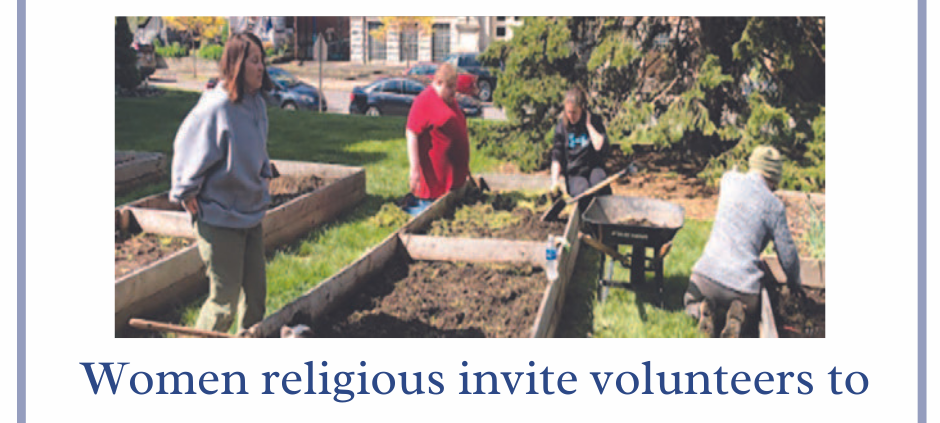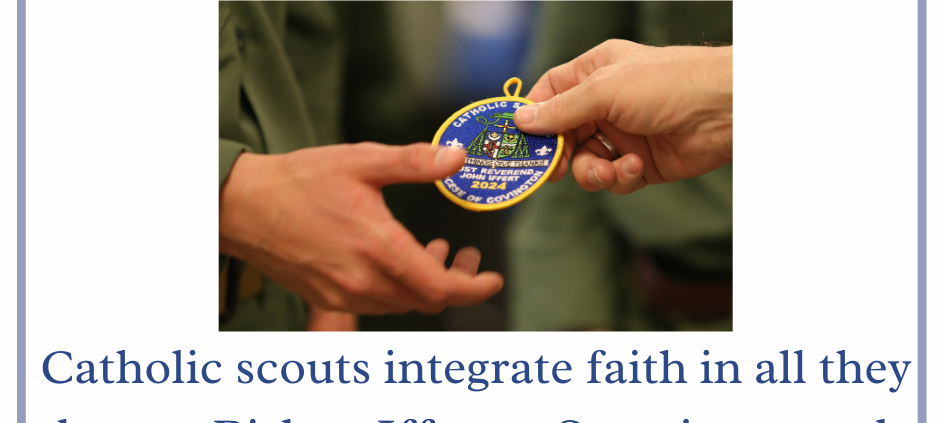Archive for year: 2024
Chrism Mass: Bishop Iffert says Christ’s mission and vision are seen‘alive and well’ in the sacred oils
The Cathedral Basilica of the Assumption was filled to capacity, March 26, for the annual celebration of the Chrism Mass. The Chrism Mass is the great diocesan assembly par excellence. All priests and deacons of the diocese gather as Bishop John Iffert blesses the holy oils and consecrates the sacred Chrism. Read more on page 10.
Women religious invite volunteers to a day of service, ‘live the Resurrection’
Sisters from the Diocese of Covington are inviting people to join them, April 20, for a “Service with Sisters” day. This event welcomes individuals to join Covington’s women religious in lending help to some local charities and organizations, including St. Vincent de Paul and the Brighton Center. Read more on page 2.
Catholic scouts integrate faith in all they do, says Bishop Iffert at Scouting awards
Mass at the Cathedral Basilica of the Assumption, Covington, March 17, opened with a procession led by a pair of scouts — carry- ing with them the flags of the United States and the Vatican.
This Mass prefaced the Scouting Awards ceremony that would follow across the street at Bishop Howard Memorial Auditorium, where scouts across the Diocese — including Scouts of America, American Heritage Girls and Girl Scouts — would receive awards, medals and patches recognizing their contributions to Catholic scouting and carrying out their faith.
Eleven received certificates at the ceremony, and four were awarded medals. Three were recipients of the Pope Pius XII award, as part of a program that encourages scouts to explore vocations. A fourth award, the St. George medal, was awarded to Mark Barth, a parishioner of Mary, Queen of Heaven Parish — the only adult to receive a scouting award at the ceremony.
Memorial Mass for the Loss of a Child returns in April, all invited to pray for the relief of the ‘burden of grief ’
The loss may be recent or long ago, but the loss of a child forever lingers in the heart. Jesus awaits all those suffering in grief, saying, “Blessed are they who mourn, for they will be comforted.” (Matt 5:4)
Once again, the Diocese of Covington’s Pro-Life Office will host a Memorial Mass for the Loss of a Child. This year’s Mass will be held April 11, 7 p.m., at Immaculate Heart of Mary parish in Burlington. Father Ryan Maher, rector, Cathedral Basilica of the Assumption, will be the celebrant.
Kissells to share Divine Mercy devotion and witness of faith in suffering
For as long as he can remember Carson Kissell has been bathed in Divine Mercy. Carson was born with a rare skin disease, Epidermolysis Bullosa. At the least amount of friction, the disease causes painful blisters and sores. There is no cure. Treatment consists of keeping the skin clean and bandaged — from neck to toe.
There is no charge to attend the Kissells’ presentation at St. Catherine Church, March 24. Admittance is first come first seated. Doors open at 6:30 p.m. The Kissell’s will begin their presentation at 7 p.m. Bring a rosary, Carson will lead the Divine Mercy Chaplet.






